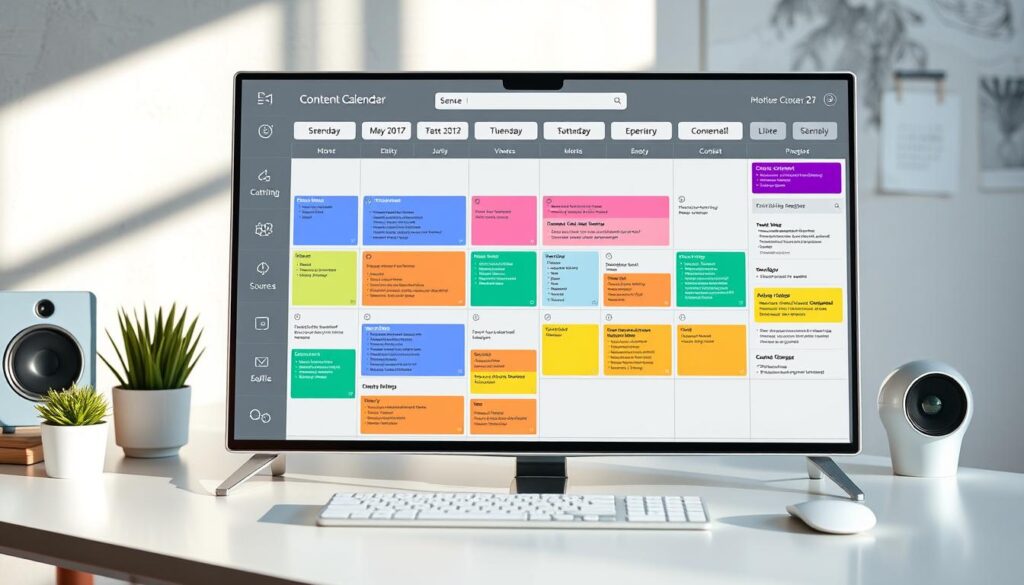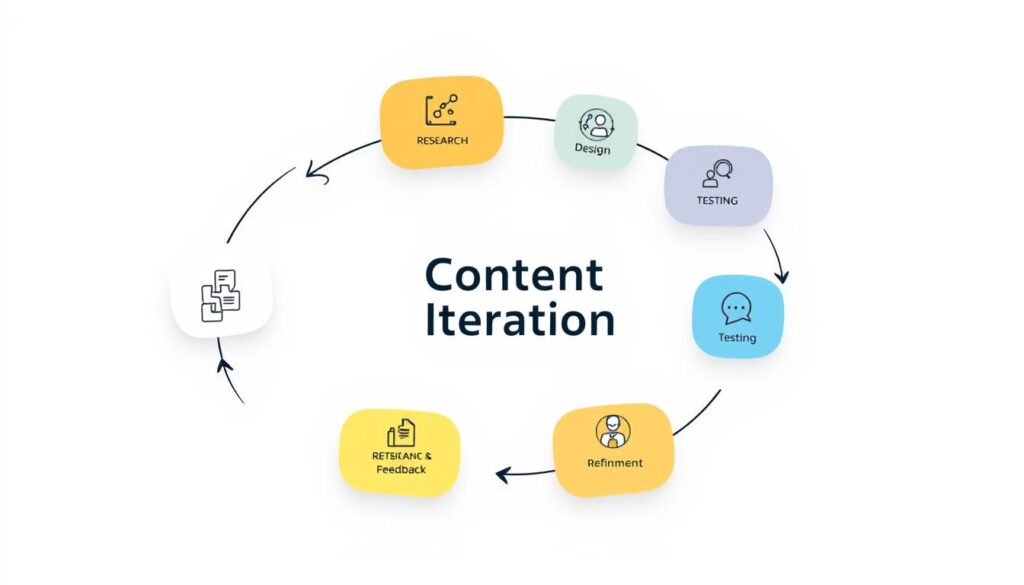In the fast-paced digital world, where every click counts, user experience content strategy has become a pivotal tool for creating meaningful connections. It’s not just about what your brand says. It’s about how it resonates with your audience, guiding them seamlessly while reinforcing your business goals.
From personalizing experiences to injecting personality into everyday interactions, brands like Airbnb, Dropbox, and Nike have redefined how content shapes user experiences. Their innovative approaches don’t just captivate; they drive measurable results.
The impact is clear: Businesses leveraging UX content strategy report improved user satisfaction, streamlined communication, and tangible growth. This strategy benefits both users and brands, creating experiences that are as functional as they are engaging.
But what does it take to build an effective UX content strategy? Let’s dive into the essential components that make it a game-changer.
Understanding User Experience in Content Strategy
Content strategy shapes how users experience a site by giving them the right content. It focuses on what users need and what the business wants. A good strategy makes things clear and saves time for everyone.
Information architecture is crucial in content strategy. It makes content easy to find and use, making things clear, reducing confusion, and helping users find what they need fast.
Content governance keeps everything consistent. It makes sure the brand’s voice and tone are the same everywhere. This builds trust and connects with users on a deeper level.
User research is key to a good UX content strategy. It gives insights into what users want and need. Creating user personas helps make content that meets individual needs, improving the user experience.
The Role of Research in Content Strategy
Research helps make decisions and guides content creation. Understanding what the audience wants is the first step. This lets content strategists create content that meets their needs.
Looking at competitors’ work is also important. It shows what works in the industry. By seeing what others do well, content strategists can find ways to be different. This helps them create content that fills gaps in the market.
User research uses both numbers and words. Surveys check if users are happy, while interviews dive deep into their experiences. Listening to what people say on X or LinkedIn helps make content that users want.
Google Analytics 4 helps make content that responds to users. It tracks how users move through a site. This data helps strategists know what to improve. By fixing common problems, they make the user experience better.
Crafting a User Persona
User personas are fictional characters that show who your audience is. They help you understand what they need, how they behave, and what they want to achieve.
To make great user personas, start by collecting data. Use surveys, interviews, and analytics. Look at demographics, pain points, and goals. This info lets you create accurate pictures of your ideal users.
Be specific when creating user personas. Avoid vague details that don’t help your design choices. Specificity is important.
After making your user personas, write user stories. These are short stories about how users use your product or service. They help you understand what users need and expect.
Storyboarding is the next step. It shows how users interact with your product step by step. It helps you find problems and opportunities to improve. By using user personas, user stories, and storyboarding, you make a plan that really speaks to your audience.
Content Planning for Optimal User Experience
A good content calendar organizes topics based on users’ needs. This ensures that your content meets their expectations and keeps them interested.
A solid editorial strategy creates content that meets business goals and keeps the brand consistent. It’s important to have a style guide for your brand’s voice and tone. This guide helps content creators stay consistent across all platforms.
Choosing the right topics is crucial. By looking at user research, you can make sure your content fits the user’s journey. Understanding user flow helps make the experience smooth, guiding users through your content easily.
Working with different teams is important in content planning. Content strategists collaborate with designers, writers, and experts to create high-quality content. This teamwork ensures that the content meets user needs and supports business goals.
Always listen to user feedback and analyze data to improve your content strategy. This ongoing effort helps you find areas for improvement and keeps your content up-to-date. By following these steps, you can make a content plan that really improves the user experience.

Creating Engaging and Valuable Content
Content creation is at the core of keeping users engaged. It’s about making content that speaks to your audience. Since users often only read 20% of a webpage, every word matters.
Use clear headings, short sentences, and bullet points to boost content value. This makes your content easy to read and understand.
Storytelling is a strong tool in content strategy. It creates positive feelings and connects with users. By telling stories, you can build loyalty and increase sales.
Remember, avoiding common mistakes in user flow is crucial. It’s as important as creating engaging content.
Personalization is key in content strategy. Tailoring content to user needs improves the experience and keeps customers. Use positive words and memorable messages to engage users.
Good content often beats fancy graphics in engaging users and driving sales. It’s all about creating meaningful content.
Accessibility and Inclusivity in Content
Content accessibility makes digital products easy for everyone to use. It ensures that all can read and understand. This is important for people with disabilities and seniors over 65. Inclusive design welcomes all users, regardless of their background.
WCAG guidelines provide rules for accessible content. These rules help avoid legal problems, especially for public websites. The UK government site is a great example. It uses clear headings for easy reading.
Inclusive design is more than just access. It makes everyone feel included. This means using open-ended questions on forms and testing content with diverse groups.
Adding different types of media is also helpful. Videos with captions and audio versions of text reach more people. About 15-20% of people worldwide have a disability. Making content accessible means not leaving out a big part of your audience.
Remember, accessibility is part of usability. It’s about making things easy for everyone. This approach is not just right – it’s good for business, too. In the long run, inclusive design pays off by reaching more users.

Testing and Iterating Content
User testing helps make content that people love. By getting real feedback, you can enhance the user experience and make your content better for your audience. Improving content is a never-ending job. You keep improving it based on user feedback. Making design simple and speeding up is important for a great user experience.
Looking at feedback is crucial for improving your content. It shows where your content might not be hitting the mark. By studying how users behave and what they say, you can make smart choices to improve your content. This includes checking if your content is easy to read, use, and access.
Don’t think of content testing as a one-time thing. It’s something you do over and over again. Regular testing helps find problems early and keeps your content working well. Making user flows work well is especially important for mobile apps, as it directly enhances user experience.

Performance Metrics for Content Strategy
It’s vital to measure your content strategy’s success. Content KPIs help you track progress and make informed decisions. Metrics like pageviews, users, sessions, and bounce rate show how your content performs and engages your audience.
But, measuring success goes beyond just numbers. Look at the average time people spend on your page to judge content quality. Check organic search traffic to see if your SEO is working. Also, track keyword rankings to see your search visibility. These metrics give a detailed view of your content’s impact.
Analytics tools are key for collecting and understanding this data. They help you monitor traffic sources, brand mentions, and conversion rates. With these insights, you can improve your strategy and create content that truly connects with your audience. Remember, a good content strategy improves user experience by giving the right information at the right time. A clear communication plan through your content reduces confusion and boosts clarity for users.
By regularly checking these metrics, you can make sure your content strategy meets business goals and audience needs. This ongoing cycle of planning, creating, distributing, and analyzing content is crucial for a successful strategy that drives results.
Evolving With User Needs
In today’s fast-paced digital world, staying relevant is crucial. User needs change often, and your content strategy must adapt. By embracing new trends, your content stays fresh and engaging.
Regular content audits are key to finding what needs updating. They help you spot outdated info and areas for improvement. User feedback is especially valuable, giving you direct insights into what your audience wants.
It’s important to adapt to new platforms and technologies. As new formats become popular, consider how to include them in your strategy. For example, you might use AI to personalize content or add interactive elements to boost engagement.
Remember, evolving with user needs is about staying ahead, not just keeping up. By always refining your approach and embracing innovation, you can create content that truly resonates with your audience and drives results.
Conclusion: Empowering Users Through Strategic Content
A strong user experience content strategy bridges the gap between user needs and business goals. Through research, thoughtful planning, engaging content, and continuous improvement, businesses can create impactful and inclusive digital experiences that leave no audience behind.
Performance metrics and adaptability ensure strategies stay relevant in a fast-paced digital world, fostering trust, engagement, and long-term success for both users and businesses. By prioritizing users at every step, your content strategy becomes a powerful tool for growth, helping your brand thrive in a competitive landscape.
Ready to elevate your UX/UI design expertise? Explore more insights and strategies on Mood Joy — your go-to resource for creating exceptional digital experiences.



